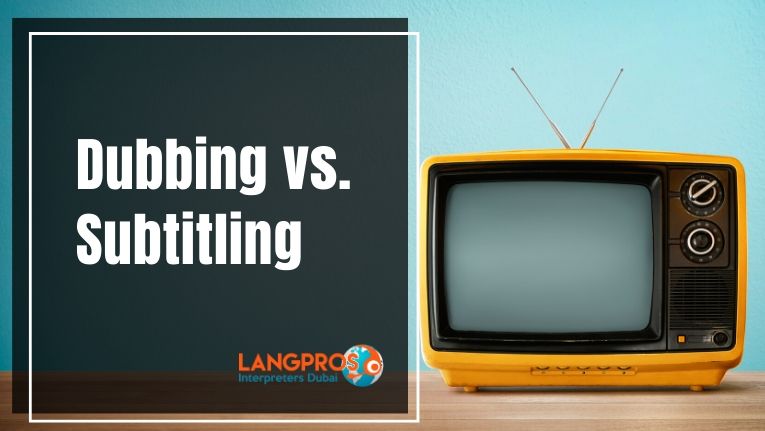In today’s connected world, video content such as TV shows, social media videos and other types of media entertainment are more popular than ever. This is why companies and organizations are interested in dubbing and subtitling their content. But what are the pros and cons of each model?
Audiovisual translation
Dubbing and subtitling are part of Audiovisual translation (AVT). AVT is defined as conveying from one language into another the language components within audiovisual contents to distribute media material on new markets.
As suggested by the name, audiovisual translations can operate both on what is seen and what is heard.
Both dubbing and subtitling have their pros and cons, and the choice often depends on particular markets. For example, the large majority of TV series and movies for the Italian market are dubbed, while in northern European countries subtitling is more common.
Dubbing
Dubbing is the mode of audiovisual translation where original speech is replaced by translated audio speech. This adaptation is carefully made to match the lip movements of the speaker on screen, with particular attention to close-ups. This process is called lip synchronization.
With dubbing, the audience can easily follow the content without having to read subtitles, and the adapted speeches convey emotions easier and in a more relatable way.
On the other hand, dubbed media do not display original voices. Moreover, while audio speech can be adapted to the target market, language, and culture; images are fixed, and this can create cultural contradictions: e.g. Asian villagers speaking Arabic, or foreign actors using local idioms.
Subtitles
Subtitles not only preserve the original voices but can also be a helpful tool towards language acquisition.
However, with subtitles the audience is required to read dialogues on-screen, which might slightly differ from what is actually uttered as space is limited and information needs to be compressed. Subtitles could also distract people from observing what is actually going on in the video.
Regardless of dubbing or subtitling, the most challenging part of audiovisual translation is the translation of humor, especially when jokes revolve around puns, pronunciations, or cultural-specific connotations of words.
